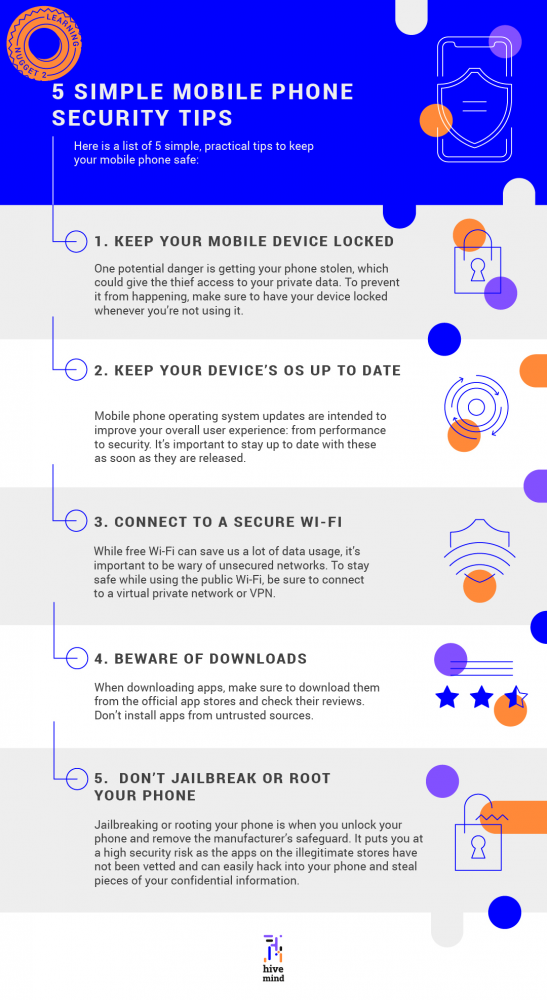It’s a well-known fact that the technical inventions we use daily can make us an object of viral infections and digital assaults on the off chance that things do not go as expected. With regards to cell phone use, there is no manual that accompanies a mobile telephone to show the client how to apply portable security. What's more, dangers are continuously developing and evolving in view of our changing habits.
To help you navigate your device in a more secure way, we’ve created a list of some practical tips to keep your device safe.
1. Keep Your Mobile Device Locked
One potential danger is getting your device stolen, which could give the thief complete access to your own data. To prevent it from happening, make sure to have your device locked whenever you’re not using it. Whether you’re going to use a password fingerprint or face recognition, it really depends on you and your mobile capability. While empowering a lock screen you'll have the choice to pick how long the telephone can stay idle before locked. Make sure to pick the shortest amount of time. This will keep you safe by naturally ordering the lock screen to turn on, regardless of whether you neglect to lock it yourself. It will likewise save your battery on the grounds that the screen will go dim after the limited time frame.
2. Keep Your Device’s OS Up to Date
Mobile phone operating system updates are intended to improve your user experience. This could include anything from performance to security. Although they happen frequently and users tend to click through quickly or ask the device to remind them in the future, it’s important to stay up to date with these as soon as they are released. These updates can protect both iOS and Android devices from newly discovered threats. To check if your phone’s OS is up to date, go to “about phone” or “general” and click “system updates” or “software update.”
3. Connect to a Secure Wi-Fi
The beauty of mobile devices is that we can access the internet anywhere and everywhere we go. One of the first things we do at a restaurant or at a friend’s house is search for Wi-Fi. While free Wi-Fi can save us a lot of data usage, it’s important to be wary of unsecured networks. To stay safe while using the public Wi-Fi, be sure to connect to a virtual private network or VPN. Check out different VPN apps which allow you to enjoy a secure Wi-Fi connection, even on public networks. Changing your virtual network will protect your location and keep your private information from prying eyes. On the other end, make sure you keep your Wi-Fi secure to prevent others from accessing your network.
4. Beware of Downloads
When downloading apps, make sure to download them from the official app stores and check their reviews. Cybercriminals create rogue mobile apps that mimic trusted brands to obtain users’ confidential information. To avoid falling into this trap, remember to look at the number of reviews, last update and contact information of the organization. Don’t install apps from untrusted sources.
5. Don’t Jailbreak or Root Your Phone
Jailbreaking or rooting your phone is when you unlock your phone and remove the safeguard the manufacturers have put in place, so that you can access anything you want on your device. It may be tempting to jailbreak or root your phone to access app stores other than the official ones, but this puts you at a high risk. The apps on these illegitimate stores have not been vetted and can easily hack into your phone and steal pieces of your confidential information. What’s more, many apps won’t be installed, as the jailbreak will be discovered. So, as tempting as it may be, better stick to the original settings.
 For more tips and insights on digital security, register to our Digital Safety & Security self-paced course, available for free here:
For more tips and insights on digital security, register to our Digital Safety & Security self-paced course, available for free here:
Liked the article? Would like to take the tips with you?
Here's a downloadable infographic:

